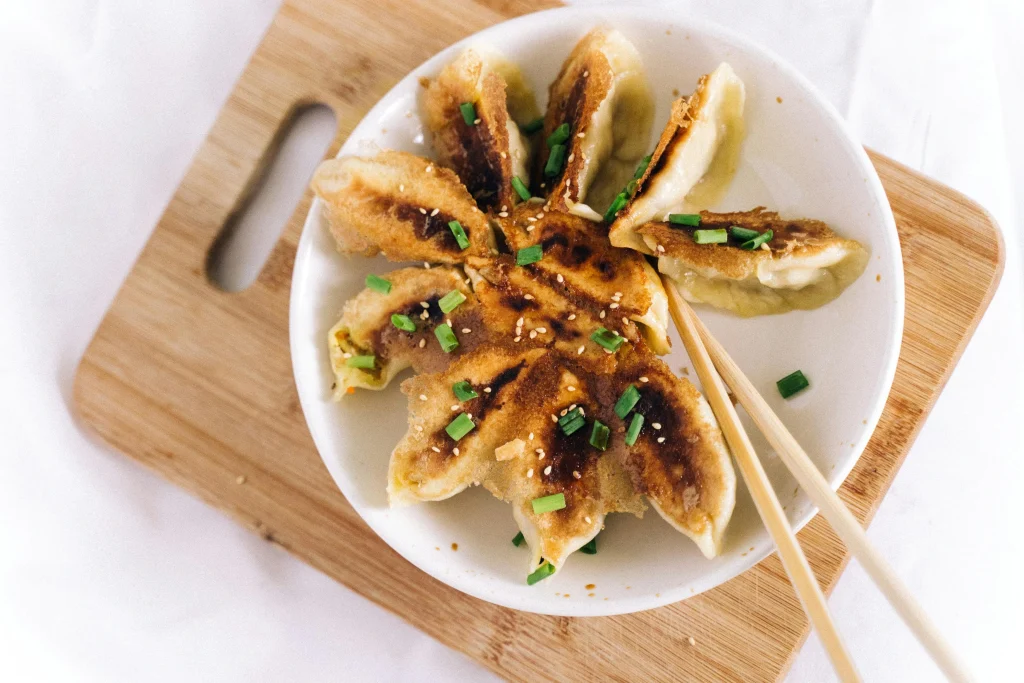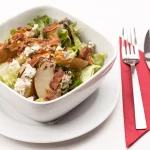The Best Fluffy Pancakes recipe you will fall in love with. Full of tips and tricks to help you make the best pancakes.
There’s something undeniably comforting about a freshly steamed dumpling—soft, warm, and bursting with flavor. Whether you’re craving the rich taste of pork and cabbage, the lightness of a veggie-filled bite, or the satisfying chew of handmade dough, dumplings offer a world of flavor in every fold. Across cultures—from Chinese jiaozi and Japanese gyoza to Korean mandu—dumplings are a beloved staple that bring people together at family dinners, street markets, and festive celebrations.
In this post, you’ll learn exactly how to make the perfect dumpling at home. From crafting tender dough and choosing savory fillings to folding like a pro and steaming with confidence, we’ll guide you step by step. Whether you’re a dumpling beginner or a seasoned home cook, this recipe and guide will help you create dumplings that are not only delicious—but unforgettable.
The Dumpling Dough: Building the Perfect Base
Every great dumpling starts with the right dough. While the filling adds flavor, the dough is what brings everything together—soft, elastic, and sturdy enough to hold in all that deliciousness without tearing or falling apart during cooking. Whether you choose to make your dumpling wrappers from scratch or use store-bought ones, understanding the dough is key to creating the perfect dumpling.

How to Make Dumpling Dough from Scratch
Making your own dough may sound intimidating, but it’s surprisingly simple and incredibly rewarding. You only need two basic ingredients: all-purpose flour and warm water. The warm water helps relax the gluten, making the dough more pliable and easier to roll out. For a basic dough:
- 2 cups all-purpose flour
- ¾ cup warm water
Mix the ingredients until a shaggy dough forms, then knead it for about 8–10 minutes until smooth and elastic. Let it rest under a damp towel for 30 minutes to relax the gluten before rolling it out.
Wonton Wrappers vs. Homemade Dough
If you’re short on time or looking for a shortcut, wonton wrappers are a convenient alternative. Found in most grocery stores or Asian markets, they’re thin and precut, perfect for quick dumpling assembly. However, keep in mind that wonton wrappers are often square and thinner than traditional dumpling dough, so they may require a gentler hand when folding and steaming.
Homemade dough, on the other hand, gives you more control over texture and thickness—and it’s more forgiving during the folding process. If you want that authentic, slightly chewy bite, homemade is the way to go.
Tips for Rolling and Storing Dumpling Wrappers
Once your dough is ready, divide it into small pieces and roll each one into a thin circle about 3 to 4 inches wide. To make them uniform, you can use a cookie cutter or simply eyeball the size if you’re comfortable.
A few helpful tips:
- Lightly dust with cornstarch or flour to prevent sticking.
- Roll out only what you need and keep the rest covered with a damp cloth.
- Homemade wrappers can be made in advance—just stack them with parchment paper between each one and refrigerate or freeze for later use.
Flavor-Packed Fillings for Every Taste
The heart of any dumpling lies in its filling. Whether you’re craving something savory and meaty or light and plant-based, there’s a dumpling combination to satisfy every palate. What makes dumplings so versatile is that their fillings can be endlessly customized with different proteins, vegetables, spices, and sauces. From traditional pork and cabbage to creative fusion flavors, the possibilities are as exciting as they are delicious.
Traditional Pork and Cabbage Dumpling Filling
One of the most beloved dumpling fillings across Asia is the classic pork and cabbage mixture. It’s juicy, savory, and packed with umami thanks to the combination of ground pork, napa cabbage, and flavorful seasonings like soy sauce, ginger, and sesame oil.
Ingredients for a classic pork filling:
- 1 pound ground pork (with some fat for juiciness)
- 1½ cups finely chopped napa cabbage
- 2 tablespoons soy sauce
- 1 tablespoon sesame oil
- 1 tablespoon minced fresh ginger
- 2 scallions, finely chopped
- Salt and white pepper to taste
To prevent sogginess, salt the chopped cabbage and let it sit for 10 minutes, then squeeze out excess moisture before mixing with the pork.
Vegetarian and Vegan Dumpling Options
Dumplings don’t have to be meaty to be satisfying. Vegetarian and vegan fillings can be just as flavorful and hearty. Popular ingredients include tofu, shiitake mushrooms, spinach, carrots, and glass noodles. These plant-based fillings often benefit from bold seasonings and a touch of texture.
Tasty combinations include:
- Crumbled tofu + mushrooms + garlic + soy sauce
- Spinach + glass noodles + sesame oil
- Cabbage + carrots + hoisin sauce + ginger
To enhance umami in vegetarian fillings, consider adding miso paste, mushroom powder, or fermented black beans.
Savory Twists: Shrimp, Chicken, or Fusion Flavors
If you’re feeling adventurous, try blending ingredients for a more modern twist on traditional dumplings. Shrimp dumplings, popular in Cantonese dim sum, are light and briny, pairing well with chives and garlic. Ground chicken dumplings can be flavored with Thai basil, lemongrass, or curry for a Southeast Asian fusion.
Fusion ideas to try:
- Chicken + lemongrass + scallions + fish sauce
- Shrimp + garlic chives + ginger + sesame oil
- Beef + kimchi + gochujang (for a spicy Korean flair)
Fusion fillings give you the freedom to blend cultures, spice levels, and ingredients into a truly personal dumpling creation.
Folding Techniques and Preparation Tips
Once you’ve prepared your flavorful filling and soft, elastic wrappers, it’s time for the fun—and sometimes intimidating—part: folding. Dumpling folding is more than just sealing dough around filling; it’s an art form that varies across cultures and styles. But don’t worry—whether you’re aiming for elegance or efficiency, there’s a folding method to suit every skill level. In this section, you’ll learn folding basics, tips for perfect preparation, and how to make sure your dumplings cook beautifully without bursting.
How to Fold Dumplings: Pleat, Triangle, and Purse Styles
There are several common ways to fold dumplings, and each has its own charm:
- Pleated Fold (Classic Chinese Style):
This popular method creates beautiful, crescent-shaped dumplings with pleats along one side. To do it:- Place a spoonful of filling in the center of your wrapper.
- Wet the edges with water.
- Fold the wrapper in half like a taco, and pinch one side while pleating the other, sealing as you go.
- Triangle Fold:
This simple and quick fold is great for beginners and works well with square wonton wrappers.- Add filling in the center.
- Fold diagonally to create a triangle.
- Press to seal, making sure there are no air pockets.
- Purse (or Money Bag) Style:
Elegant and perfect for steamed dumplings.- Add filling to the center of a round wrapper.
- Gather the edges like a sack.
- Twist and pinch the top to seal.
Pro tip: Don’t overfill your dumplings—about 1 to 1.5 teaspoons of filling is plenty.
Tips to Keep Dumplings from Bursting During Cooking
Preventing your dumplings from falling apart is all about sealing and structure:
- Moisten the edges of the wrapper with water or cornstarch slurry to help it stick tightly.
- Eliminate air pockets inside the dumpling, which can expand during cooking and cause splitting.
- Double-seal if necessary—press down firmly along the edges, then go over it again with a fork or your fingers.
- Let dumplings rest for 5–10 minutes before steaming or frying to let the seal firm up.
Prepping for Freezing and Batch Cooking Dumplings
One of the best things about dumplings is how well they freeze. Making a big batch and freezing some for later means dumplings are only ever a few minutes away.
- Arrange uncooked dumplings on a tray in a single layer so they don’t stick together.
- Freeze for 1–2 hours uncovered until firm, then transfer to an airtight bag or container.
- Cook from frozen—no need to thaw. Just add a couple of extra minutes to the steaming or cooking time.
Label your bags with the date and type of filling, and you’ll have ready-to-steam dumplings any time.
Steaming and Cooking Dumplings Like a Pro
Once your dumplings are filled and folded, it’s time to transform them from doughy parcels into irresistible bites. The cooking method you choose—whether steaming, boiling, pan-frying, or deep-frying—can completely change the texture and taste of your dumplings. In this section, we’ll walk through each popular technique so you can cook your dumplings like a pro and match the method to your desired flavor and texture.
How to Steam Dumplings Perfectly
Steaming is one of the most traditional and healthiest ways to cook dumplings. It gives them a soft, silky texture and preserves the delicate flavor of the filling.
To steam dumplings:
- Prepare a bamboo steamer or metal steamer basket lined with parchment paper or napa cabbage leaves to prevent sticking.
- Arrange dumplings in a single layer, leaving space between each one to allow for expansion.
- Bring water to a boil in a pot or wok, making sure the steamer basket does not touch the water.
- Cover and steam for 8–10 minutes (12–14 minutes if frozen), until the dumpling skins look translucent and slightly puffed.
Pro Tip: Don’t lift the lid too early while steaming—it can cause the wrappers to collapse.
Pan-Frying for Crispy-Bottomed Potstickers
Want that perfect combination of crispy and tender? Pan-frying gives you delicious potstickers with golden, crunchy bottoms and steamed tops.
To make pan-fried dumplings (potstickers):
- Heat 1–2 tablespoons of oil in a non-stick skillet over medium-high heat.
- Place dumplings flat side down in the pan and let them cook for 2–3 minutes, until the bottoms are golden.
- Carefully add ¼ cup of water to the pan, then immediately cover with a lid to steam the tops.
- Let steam for 6–8 minutes, then remove the lid and cook another 1–2 minutes to re-crisp the bottoms.
Pro Tip: Swirl the water in the pan quickly after adding it to avoid sudden oil splatters.
Boiling and Deep-Frying Dumplings: When and How
- Boiled Dumplings:
Boiling is great for softer, more tender dumplings like those filled with vegetables or delicate seafood.- Bring a large pot of salted water to a boil.
- Gently lower dumplings in, stirring to prevent sticking.
- Boil for 4–6 minutes or until they float and the wrapper is cooked through.
- Remove with a slotted spoon and serve immediately.
- Deep-Fried Dumplings:
This method creates a golden, crunchy shell—perfect for party snacks or dipping.- Heat oil to 350°F (175°C) in a deep pot or fryer.
- Fry dumplings in small batches until golden brown (about 3–5 minutes).
- Drain on paper towels and serve hot with your favorite dipping sauce.
Pro Tip: Always test one dumpling first to ensure your cooking time and temperature are dialed in.
Dipping Sauces and Serving Suggestions
A dumpling without a dipping sauce is like a gift without a ribbon—it’s still good, but the final touch takes it to the next level. The right dipping sauce enhances every bite, adding a punch of saltiness, acidity, heat, or sweetness that complements your filling. In this section, you’ll discover classic sauces, customizable blends, and creative sides to serve with your dumplings for a complete and mouthwatering experience.
Classic Soy-Based Dipping Sauce
The most traditional dumpling dipping sauce is a simple and savory blend of soy sauce, vinegar, and aromatics. It’s balanced, bold, and easy to whip up in minutes.
Basic ingredients:
- 2 tablespoons soy sauce
- 1 tablespoon rice vinegar
- ½ teaspoon sesame oil
- 1 clove garlic (minced)
- Optional: chopped scallions or a dash of chili flakes
This sauce complements pork, shrimp, and vegetable dumplings alike. You can adjust the ratio of soy sauce to vinegar based on how salty or tangy you like it.
Spicy, Tangy, and Sweet Sauce Variations
For those who love to explore bold flavors, try customizing your own sauce based on your favorite flavor profile:
- Spicy Chili Sauce: Add chili oil, Sriracha, or gochujang (Korean chili paste) to your soy base for a fiery kick. Great with beef or chicken dumplings.
- Sweet and Sour Sauce: Mix soy sauce, vinegar, and a touch of honey or brown sugar. Add grated ginger for warmth.
- Peanut Sauce: Combine creamy peanut butter, soy sauce, garlic, lime juice, and water for a rich, Thai-inspired dip—especially good with vegan dumplings.
Pro Tip: Always taste your sauce and adjust it gradually. A little heat or acidity goes a long way!
What to Serve with Dumplings for a Complete Meal
While dumplings are satisfying on their own, they also shine as part of a full meal. Pair them with light sides and refreshing beverages to create a well-balanced dining experience:
- Sides:
- Cucumber salad with rice vinegar and sesame seeds
- Stir-fried greens like bok choy, spinach, or snow peas
- Simple fried rice or scallion pancakes
- Soups:
A light broth like miso soup or hot and sour soup makes a great starter or complement to dumplings. - Drinks:
Green tea, jasmine tea, or a crisp sparkling water with lemon helps cleanse the palate between bites.
Serving Tip: Arrange dumplings on a platter with dipping sauces in small bowls, garnish with chopped scallions or sesame seeds, and serve hot for a crowd-pleasing appetizer or main dish.





